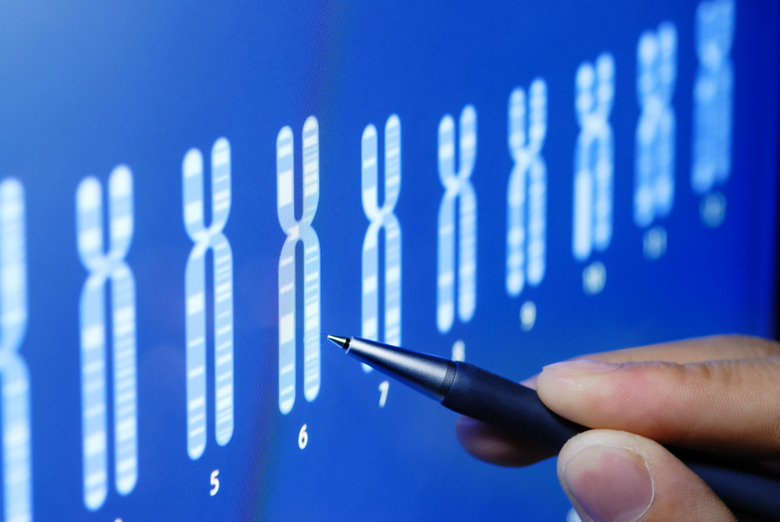Differences In Male And Female Chromosomes
The main differences between males and females are the X and Y chromosomes. Among humans, two X chromosomes make a woman, and an X and a Y chromosome make a man. However, there are other differentiating features between these chromosomes. Some differences include size, number of genes and even abnormal chromosome pairings. In some species, animals have a different sex-determining system, as they use a Z and a W chromosome.
Working Genes
Working Genes
While the male Y chromosome and female X chromosome differ in size, they also vary in the number of working genes on the chromosome. The X chromosome contains more than 1,000 working genes, and the Y chromosome has less than 100 working genes. Although males have an X chromosome, it behaves very differently when there is another X chromosome present compared to its behavior when a Y chromosome is present. Of the working genes on the X chromosome, 200 to 300 are unique to sex, so only 700 to 800 of the working genes are shared and active in both males and females.
Size
Size
The actual size of the chromosomes differs between males and females. Several chromosome pairs in males were found to be larger than those in females when sheep chromosomes were investigated. The differences in chromosome sizes may be key to explaining some differences between the sexes that are not explained by the X or Y chromosome.
Temperature
Temperature
Some species, such as lizards, moths, birds and flatworms, have different sex-determination genes than X and Y. These genes are Z and W. The ZZ genotype produces males, and the ZW produces females. Sex determination in some of these species is directed by temperature. High temperatures have been known dictate the sex of the animal. For example, high incubation temperatures for alligator eggs promotes male, ZZ, genotypes. However, in many lizards and turtles, high incubation temperatures favor the female, ZW, genotype.
Sex Abnormalities
Sex Abnormalities
There are several syndromes that create sex differentiation abnormalities. Females with only one X chromosome have Turner syndrome, and if the girl survives birth, she will experience abnormal growth and be very small, with extra folds of skin on the neck. Triple X syndrome occurs in females with an additional X chromosome. These are known as super females and tend to be similar to females with two X chromosomes. Men who are born with two X chromosomes and a Y chromosome have Klinefelter syndrome. These men tend to be very feminine and can even have high-pitched voices. XYY syndrome occurs when men have an extra Y chromosome. These are known as super males and tend to produce much more testosterone than typical males.
References
- "The Independent"; War of the Sexes: How Chromosome Study Shows Male and Female Genetic Differences; Steve Connor; Mar. 13, 2005
- "Nature"; Difference in Chromosome Lengths Between Male and Female Sheep; A. Dain; June 1972
- Anthropology Palomar College: Sex Chromosome Abnormalities; Dennis O'Neill; Jan. 6, 2011
Cite This Article
MLA
Tomas, Liz. "Differences In Male And Female Chromosomes" sciencing.com, https://www.sciencing.com/differences-male-female-chromosomes-8146227/. 13 March 2018.
APA
Tomas, Liz. (2018, March 13). Differences In Male And Female Chromosomes. sciencing.com. Retrieved from https://www.sciencing.com/differences-male-female-chromosomes-8146227/
Chicago
Tomas, Liz. Differences In Male And Female Chromosomes last modified March 24, 2022. https://www.sciencing.com/differences-male-female-chromosomes-8146227/
